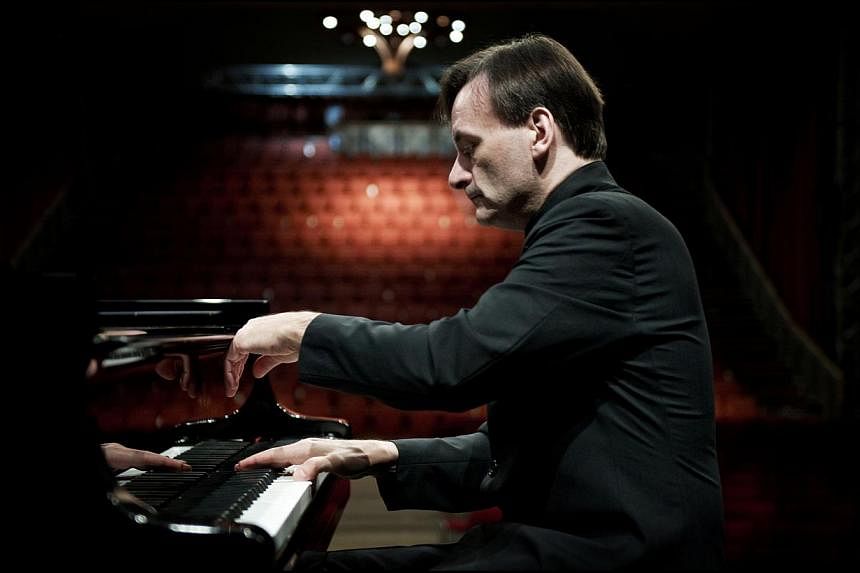VCH Chamber Series: Stephen Hough In Recital
Victoria Concert Hall/Thursday
"It's like a sandwich - French rye bread at the ends and some a Polish sausage in the middle," says British pianist Stephen Hough of his recital programme, before playing Chopin's Op. 15 No. 2 Nocturne in F-sharp Major as his first encore.
Hough has made regular concert appearances in Singapore since the 1990s, and has gained a large fan base here. This performance - comprising four Debussy works which bookended the four Chopin ballades - was his first since the Victoria Concert Hall was refurbished, having performed there numerous times before.
Adhering to Debussy's performance directions of playing with delicacy and tempo fluctuations, Hough delivered a clearly coherent and witty performance of La Plus Que Lent, emphasising the dissonant harmonies cheekily and intentionally keeping the tempo unstable. These quirky characteristics were also evident in the penultimate work, Debussy's Children's Corner Suite, especially in the third (Serenade Of The Doll) and last movement (Golliwog's Cakewalk).
In Estampes, the acoustics of the hall suited Pagodes well, the tones of the piano resonating nicely before fading. In the Habanera, the opening high C-sharps rang clear like a tinkling bell. Hough flitted between the contrasting sections with a natural ease and seemed to revel in the "wrong notes", the peculiar and unique harmonies which gave the work its character. Unfortunately, the acoustics worked against the toccata-like Jardins sous la Pluie, leaving behind an array of blurred notes echoing away all throughout the work.
Debussy's L'isle Joyeuse which closed the concert was inspired by artist Watteau's colourful painting, L'Embarquement de Cythere, depicting a happy group of revellers departing for/from a mythical island that is the birthplace of goddess Venus. Hough's version, however, was monochrome. He played only loud and louder, the expressive palette of colours he used for the earlier works seem to have been exhausted, and the subtleties of tonal shading also used before were non-existent here. The quiet sparkling and shimmering of the water at the beginning sounded more like a rushing stream.
In between Estampes and the Children's Corner suite were the four Chopin ballades, daringly fast and played with refreshing candour. The calm introduction of the Second Ballade gave way to wild, careless abandon, and the tentativeness in the beginning of the First Ballade broke into an overly sentimental and lyrical middle section.
Throughout the Ballades the louder moments were fiery and brilliant - Hough was undoubtedly a virtuoso - but it was in the softer and stiller moments where he made an impact. His use of rubato was strikingly unconventional. He lingered over certain phrases, taking time at all sorts of places, and sometimes even intentionally playing both hands asynchronously such that the melody is given prominence. The ending of the Fourth Ballade was taken at breakneck speed, again resulting in a blur.
Hough subsequently tossed off two more encores: a Pas de Deux from Austrian composer Leon Minkus' ballet music for Don Quixote, and the nocturne from Grieg's Lyric Pieces Suite, Op. 54 No. 4.

